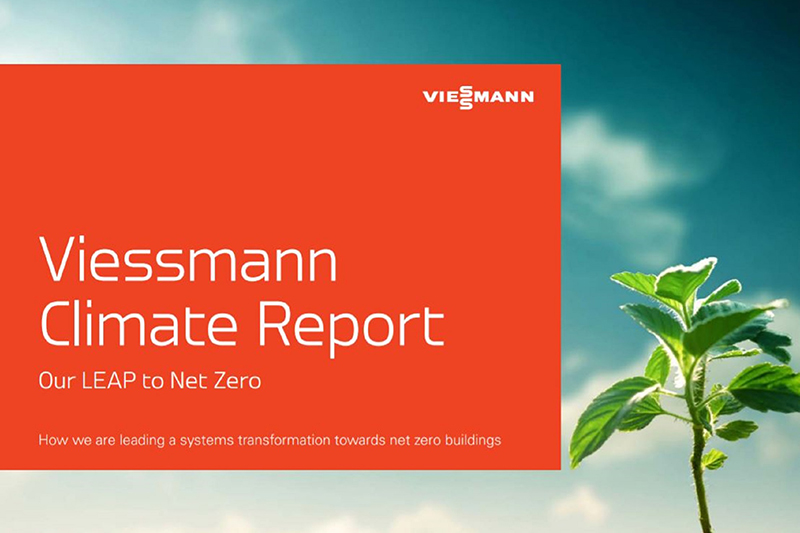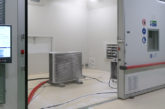
Viessmann Group has committed to reducing emissions from its operations, products and the entire value chain in line with the 1.5°C pathway defined in the Paris Agreement in 2015, declaring it will be fully net-zero by mid-century.
To achieve the required emissions reductions in its operations, the group will invest over €60 million over the coming years to upgrade facilities with the latest efficiency and climate technologies. All future manufacturing sites will be developed as net-zero facilities where possible.
The announcement came as Viessmann presented its first climate report at COP26 in Glasgow, where Max Viessmann, Co-CEO Viessmann Group and CEO Viessmann Climate Solutions and fourth generation leader of Viessmann spoke at the Sustainable Innovation Forum.
Max Viessmann said: “Every company must become a climate solutions company. It must come straight from the heart. We need to emphasise the responsibility that we have to the future, and be aware that how we live today will impact future generations.”
Aligning with the 1.5°C pathway means Viessmann will, by 2030, reduce by 48% direct emissions from its own operations (scope 1) as well as indirect emissions from electricity purchased and used by the organisation (scope 2) in absolute terms versus 2019 levels. This corresponds to a 75% absolute reduction vs 2005 levels, on top of the company’s previous substantial investments in energy efficiency and emissions reduction.
Viessmann will measure progress by committing itself to a target to reduce by 55% its emission intensity per value added (scope 3) by 2030 vs 2019. This will be achieved mainly via a massive portfolio shift towards renewable based solutions.
Viessmann’s forecast strong future growth and additional jobs will not lead to higher Greenhouse Gas emissions. Its aspiration is to empower trade partners, installers and end-users to reduce emissions immediately.
“Viessmann has a strong track-record in reducing emissions and achieving its own ambitious energy efficiency targets at its global manufacturing sites – with technologies already available. This gives us a headstart in leading the way towards a climate neutral building stock,” says Graham Russell, managing director, Viessmann UK.
The targets released in the Viessmann Climate Report are part of a broader, long-term climate strategy for the company, which also entails climate partnerships with suppliers, partners, the regions where Viessmann’s operations are located, employees and customers, to lead and advocate for an acceleration of the decarbonisation of the building sector.
A recent example of a co-created partnership and movement for climate is the “Mission Zero – Climate neutral Waldeck-Frankenberg” project in Germany, which is helping to achieve climate neutrality by 2035 for the region inhabited by 156,000 people. Viessmann‘s “ViMove for Climate” campaign engages employees, partners and customers to plant one million trees through community and individual sports activities.












